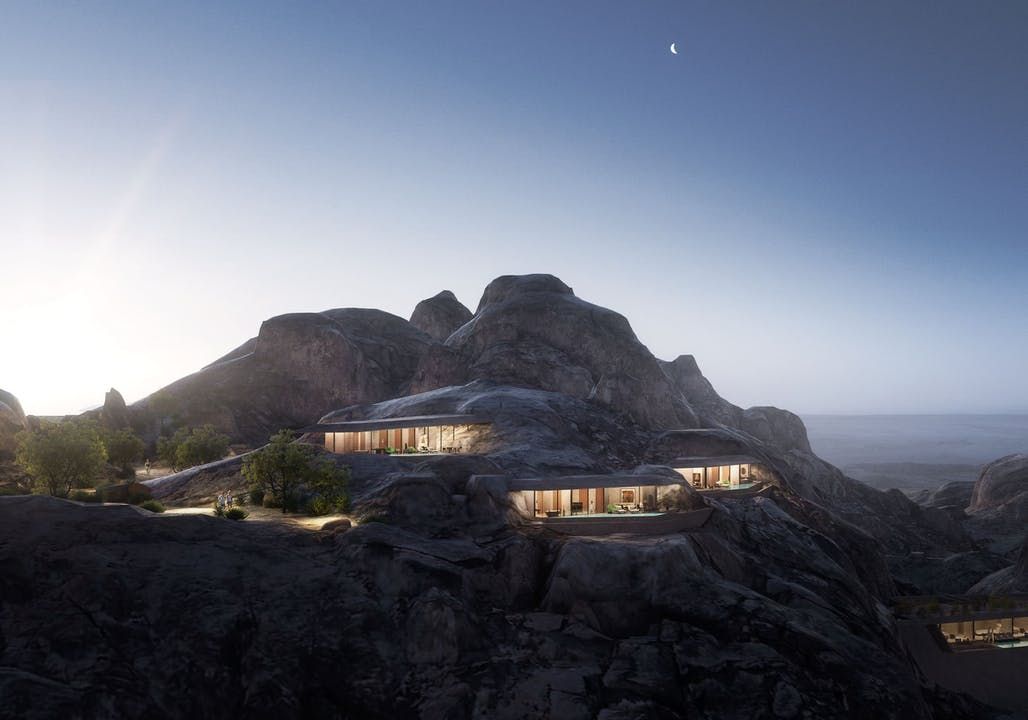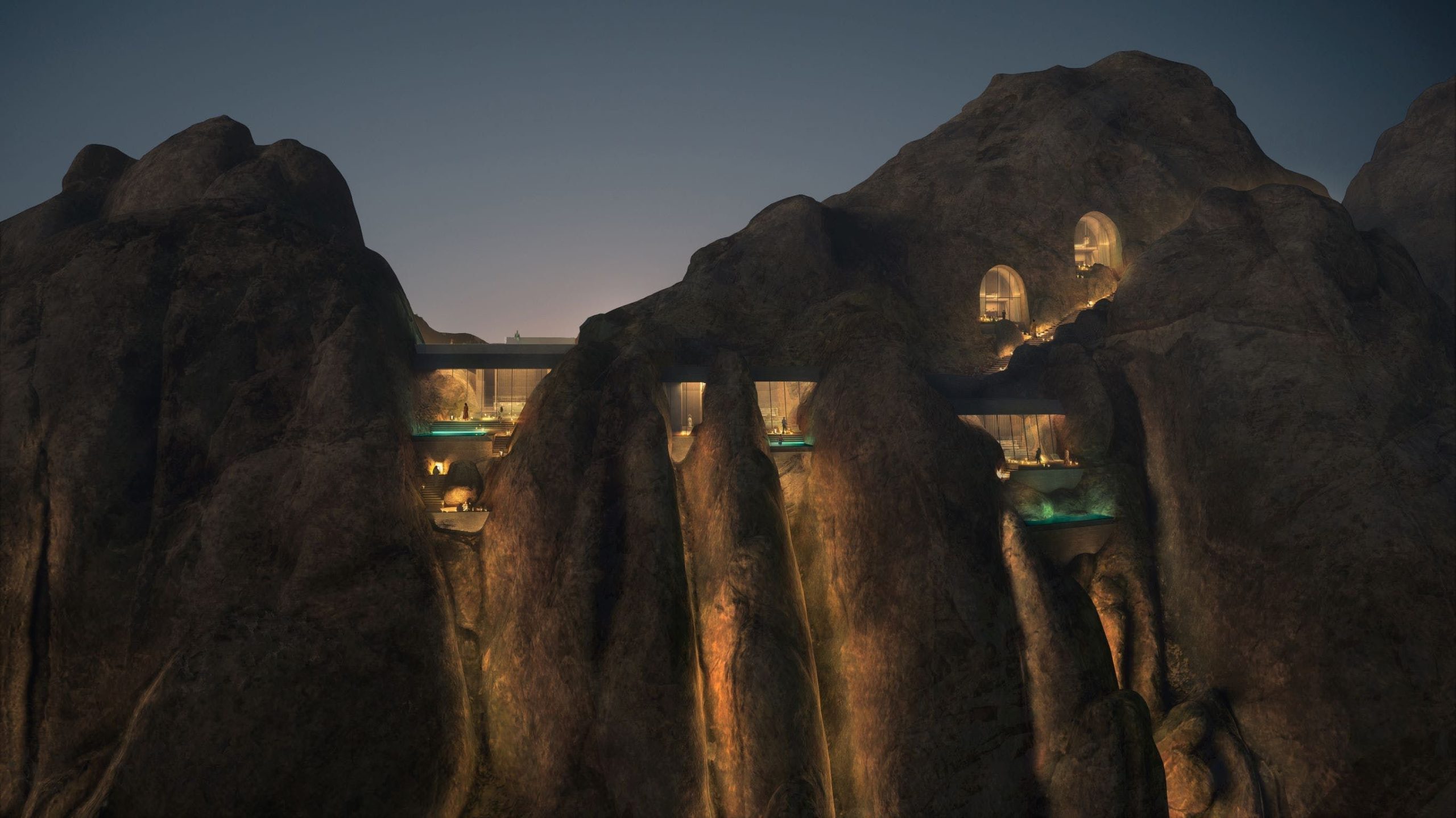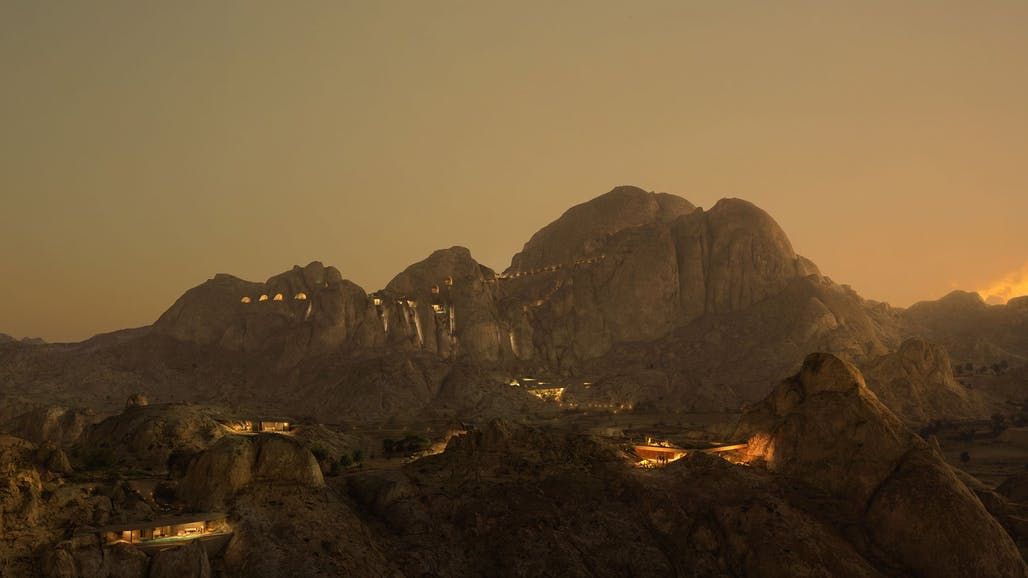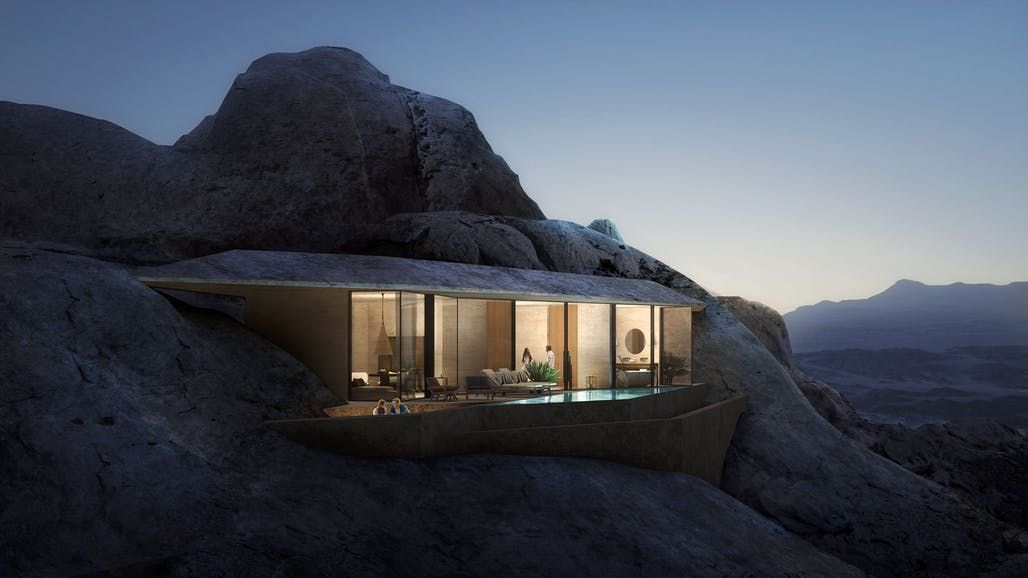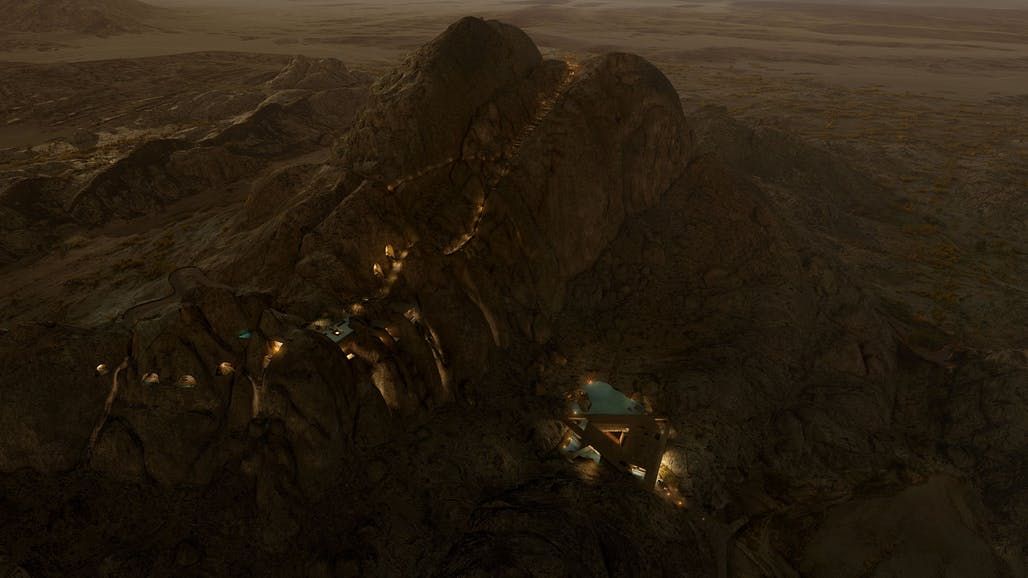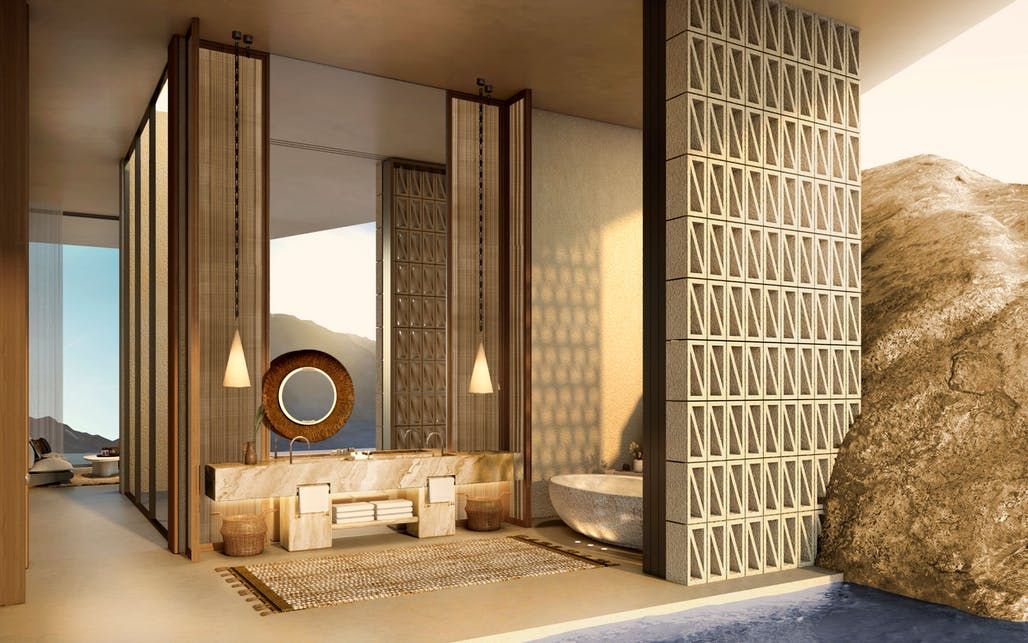Commissioned by The Red Sea Development Company (TRSDC), Oppenheim Architecture designed a resort in the heart of the mountains in Riyadh, Saudi Arabia. Dubbed “Desert Rock”, the structure comes out of the local grand granite mountains of the Red Sea, offering an unprecedented experience of connection with nature, whilst protecting the environment.
“Desert rock will provide guests with uninterrupted spectacular views while preserving the natural landscape for future generations to enjoy,” says John Pagano, CEO at TRSDC.
“We have drawn inspiration from the surrounding environment, while providing unparalleled luxury, allowing guests to connect with nature and create memorable experiences,” he adds.
The unveiled plans show that guests can reach the resort through a valley hidden between the mountains—an experience that begins before even entering the resort! Once they reach, they can choose from 48 villas and 12 hotel rooms, all with a spectacular view.
Oppenheim architecture fully integrated the resort into its rocky surroundings, leaving the silhouette of the natural landscape untouched. This approach to the project strongly follows the beliefs and philosophy of the US-based architectural firm: “to build with the land, not on the land”.
Desert Rock houses a range of accommodation options, including ground-level dwellings, crevice hotel suites in the heart of the mountain, and a number of excavated rooms within the rock mass itself.
To enhance the experience, even more, most of the roads leading to the resort will be relocated to the edge of the main wadi valley, hidden behind the view. This intervention will ensure providing uninterrupted views of the surrounding scapes and minimize sound and light pollution.
Aiming to achieve the highest Leadership in Energy and Environmental Design (LEED) certification, Oppenheim Architecture developed a design that cuts down energy consumption and regenerates native flora. Desert Rock is truly intended to be a regenerative resort, using architecture as a tool to sustain and, even more, improve the environment.
More on the project’s sustainability; water retention and distribution systems will be integrated throughout the site. Moreover, the infrastructure will be created from the excavated materials from the site: stone will be used to construct interior and exterior walls and floors, while other stones and sand will be incorporated into the concrete aggregate.
During the daytime, the hotel’s material palettes and shadow effects blend with the mountainside to conceal the scheme, while at night, the glow of the architectural lighting activates the hillside.
“Desert rock is one of the most dramatic desert landscapes in the world, which is why we wanted to use the architecture as a way to honor and respect it,” notes Chad Oppenheim, founder of Oppenheim Architecture.
“By utilizing natural materials and integrating the resort into the rock, guests can connect physically with the destination and experience Saudi Arabia’s stunning, natural beauty.”
Construction of Desert Rock began in July 2021, and the developers expect to begin welcoming guests by the end of 2022, just after opening the first hotels. Phase one of the project includes 16 hotels in total and is expected to finish by 2023.
The final completion of the project, which includes 50 resorts with 8,000 hotels rooms and more than 1,000 residential properties across 22 islands and six inland sites, is due in 2030. Desert Rock will also accommodate recreational services including luxury marinas and golf courses, and, more importantly, an international airport.
